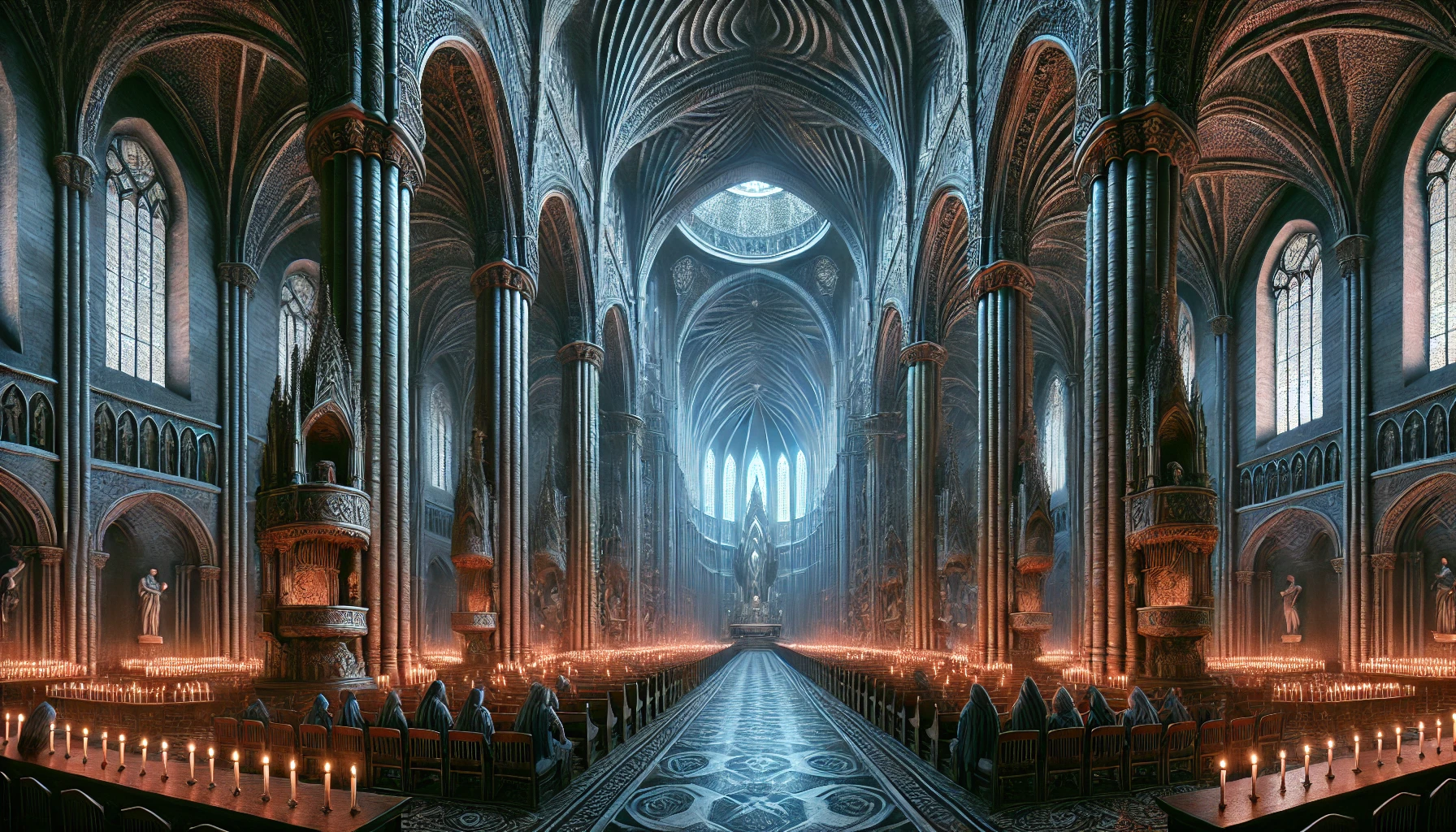Ecclesiarchy Temples in Mondavel
Though the Ecclesiarchy formally severed ties with Mondavel, declaring it no longer part of the Faith, a number of official Ecclesiarchal temples still remain within the Free State. These temples serve as remnants of Mondavel’s past connection to Holydom, and though they are not representative of Mondavel’s religious identity as a whole, they continue to operate under Ecclesiarchy rule, adhering strictly to Clairvaux’s doctrine.
The followers of these temples are a minority, but they are not insignificant. They are often the most conservative and traditionalist worshippers, drawn to the certainty and rigid structure of the Ecclesiarchy’s teachings. However, these temples exist in an uneasy position—though legally permitted to function, they are regarded with suspicion by the general populace, particularly due to their uncompromising opposition to arcane magic.
The Role of the Ecclesiarchy in Mondavel
Unlike in Clairvaux, where the Ecclesiarchy wields direct political power, in Mondavel, these temples have no authority over governance. They are allowed to exist due to historical precedent, lingering diplomatic ties, and the personal devotion of some citizens, but they are closely monitored. While they still receive funding, messages, and directives from Clairvaux, they operate without any direct legal standing in Mondavel’s republican system. This has led to a strange double identity—on one hand, these temples function as places of worship, offering blessings, rites, and religious instruction as they would in Clairvaux. On the other, they act as outposts of the Ecclesiarchy, reporting on the state of faith in Mondavel and subtly working to undermine the nation’s acceptance of magic.Suspicion and Conflict
The greatest point of contention between these temples and the rest of Mondavel’s society is their absolute rejection of magic. The Ecclesiarchy views all arcane magic as a perversion of divine law, a force that mortals were never meant to wield. While clerical and divine magic (when granted through the Lady’s will) is considered sacred, wizardry, sorcery, and witchcraft are seen as abominations. This puts the Ecclesiarchal temples at odds with the arcane colleges, the merchant guilds that employ magical artificers, and even Mondavel’s government itself, which has openly embraced magic as part of its culture and economy.- Open displays of magic near these temples often lead to verbal condemnation, tense confrontations, or even demands for exile.
- Ecclesiarchy priestesses publicly decry mages as corruptors, warning that Mondavel’s acceptance of arcane practices will lead to its ultimate downfall.
- Some of the more radical faithful refuse to interact with businesses that employ spellcasters, creating small, insular communities that attempt to live apart from Mondavel’s more progressive society.
The Most Prominent Ecclesiarchal Temples in Mondavel
While there are several Ecclesiarchal places of worship scattered throughout the Free State, only a few remain significant, drawing devoted followers despite their precarious status. These temples continue to operate under Ecclesiarchy doctrine, maintaining their rigid stance on magic and faith, though they exist in an increasingly hostile environment where arcane practice is widely accepted.1. The Grand Basilica of Saint Aurelia (in the capital city, Tor Valis)
- The largest and most influential Ecclesiarchal temple in Mondavel.
- Originally built when Mondavel was still part of Holydom, it has retained a steady, albeit shrinking, congregation.
- The High Priestess, Mother Ilythia, is a staunch opponent of magic, frequently condemning Mondavel’s government for allowing arcane practices to flourish.
- Security is tight, as tensions sometimes flare between the temple’s faithful and pro-magic groups.
- Many young girls are still sent to be trained as Ecclesiarchal sisters, though few now take their vows, choosing instead to remain in Mondavel’s freer society.
2. The Cloister of Saint Evandra (a secluded monastery near the western border)
- A semi-isolated community of nuns and devout women devoted to the purification of the soul and the strict rejection of worldly corruption.
- Magic users are not permitted on the monastery’s grounds, and those seeking redemption from the "taint of magic" sometimes retreat here for religious cleansing.
- Some believe the sisters perform ancient rituals of purification, though these are shrouded in secrecy.
- The High Abbess, Sister Marcenia, has refused to leave Mondavel despite pressure from the Ecclesiarchy to relocate the monastery to Clairvaux.
3. The Chapel of the Iron Crown (in the city of Redhaven, a major trade port)
- The smallest but most militant of the major Ecclesiarchal temples in Mondavel.
- Led by Reverend Mother Cassia, a former sanctarian of Clairvaux, the chapel attracts those who believe that Mondavel has fallen into heresy.
- Members of this sect are known for their confrontational attitude, holding loud sermons in public spaces denouncing the use of magic.
- Some of the more radical sisters have been accused of harassing or physically attacking arcane practitioners, leading to increasing tensions with the city’s officials.
- Unlike other temples, the Chapel of the Iron Crown still trains Ecclesiarchal paladins, though their presence in Mondavel is seen as increasingly unwelcome.










Comments